ISSN ONLINE(2319-8753)PRINT(2347-6710)
ISSN ONLINE(2319-8753)PRINT(2347-6710)
Dr.S.Vimala1 J.S.Sathya2
|
| Related article at Pubmed, Scholar Google |
Visit for more related articles at International Journal of Innovative Research in Science, Engineering and Technology
A subset S of V is called a domination set in G if every vertex in V-S is adjacent to at least one vertex in S. A dominating set is said to be Fuzzy Total Dominating set if every vertex in V is adjacent to at least one vertex in S. Minimum cardinality taken over all total dominating set is called as fuzzy total domination number and is denoted by 􀟛􀯙􀯧 (G). The minimum number of colours required to colour all the vertices such that adjacent vertices do not receive the same colour is the chromatic number 􀟯(G). For any graph G a complete sub graph of G is called a clique of G. In this paper we find an upper bound for the sum of the fuzzy total domination and chromatic number in fuzzy graphs and characterize the corresponding extremal fuzzy graphs.
Keywords |
| Fuzzy Efficient Domination Number, Chromatic Number, Clique, Fuzzy Graphs |
INTRODUCTION |
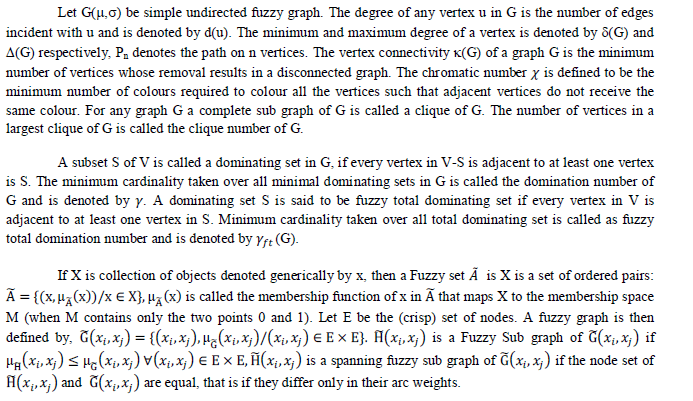 |
| The fuzzy definition of fuzzy graphs was proposed by Kaufmann [4], from the fuzzy relations introduced by Zadeh [9]. Although Rosenfeld [5] introduced another elaborated definition, including fuzzy vertex and fuzzy edges. Several fuzzy analogs of graph theoretic concepts such as paths, cycles connectedness etc. The concept of domination in fuzzy graphs was investigated by A.Somasundram, S.Somasundram [6]. A. Somasundram presented the concepts of independent domination, total domination, connected domination and domination in cartesian product and composition of fuzzy graphs([7][8]). |
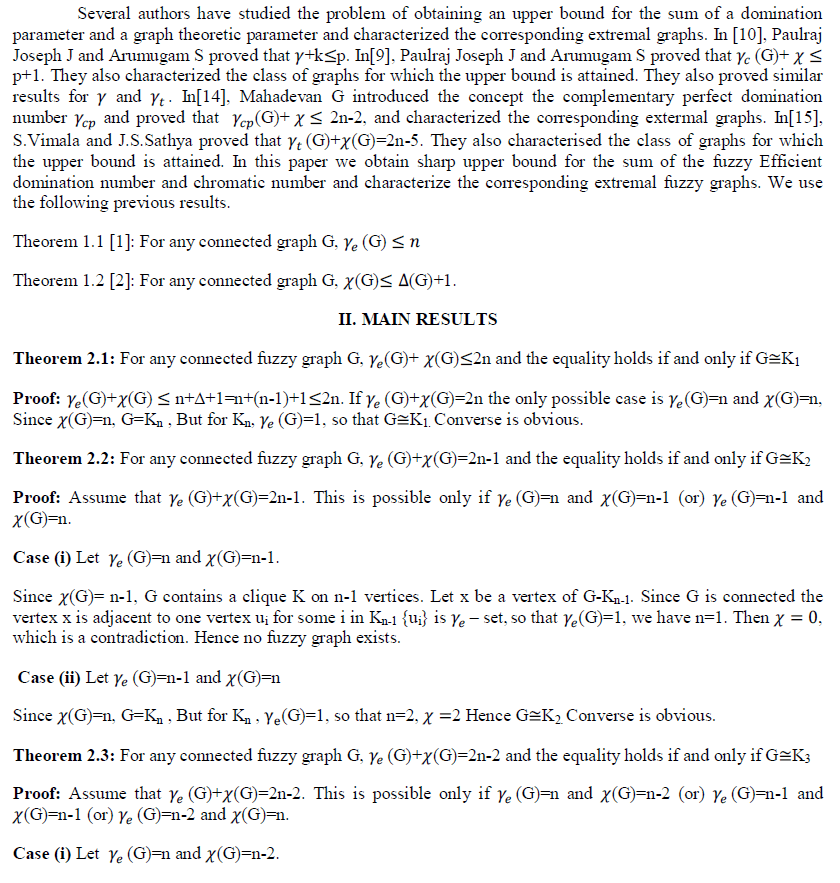 |
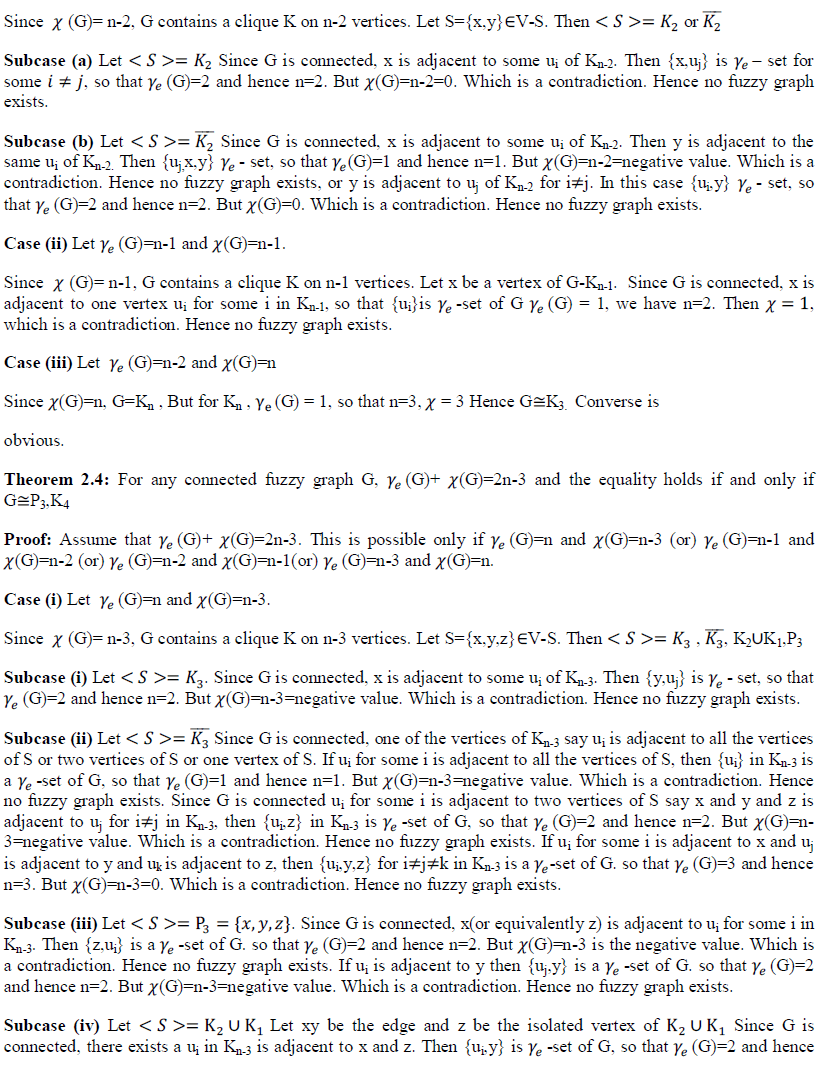 |
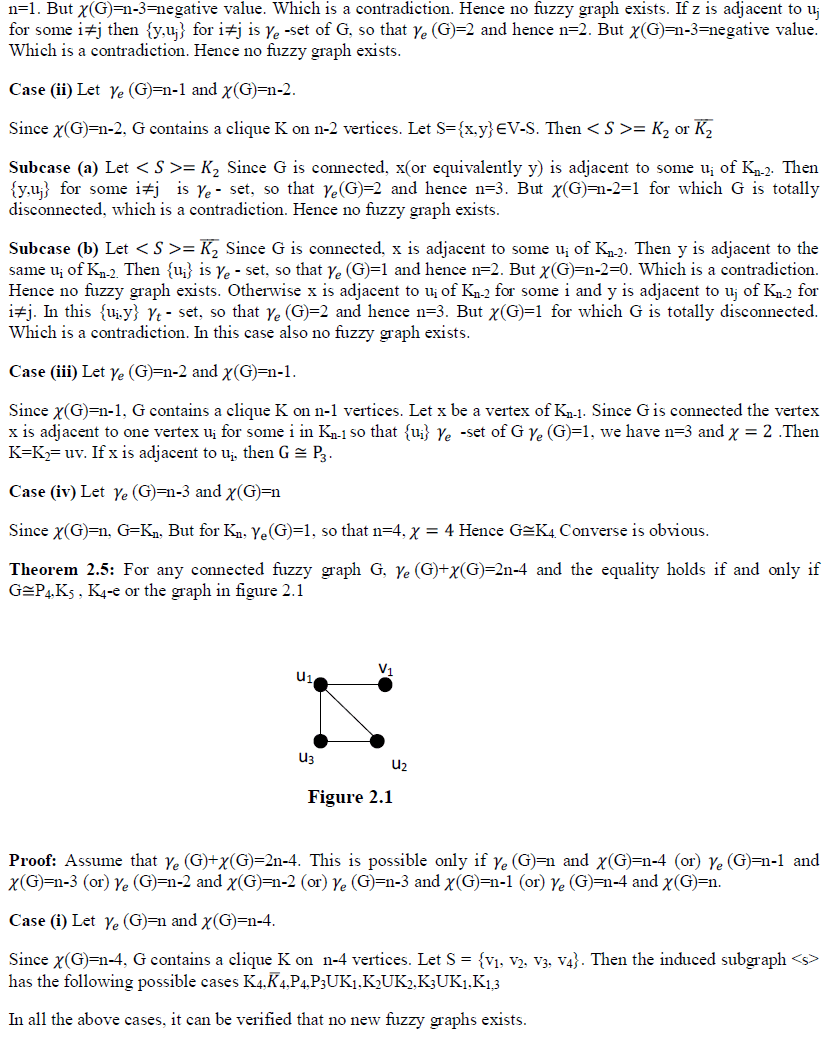 |
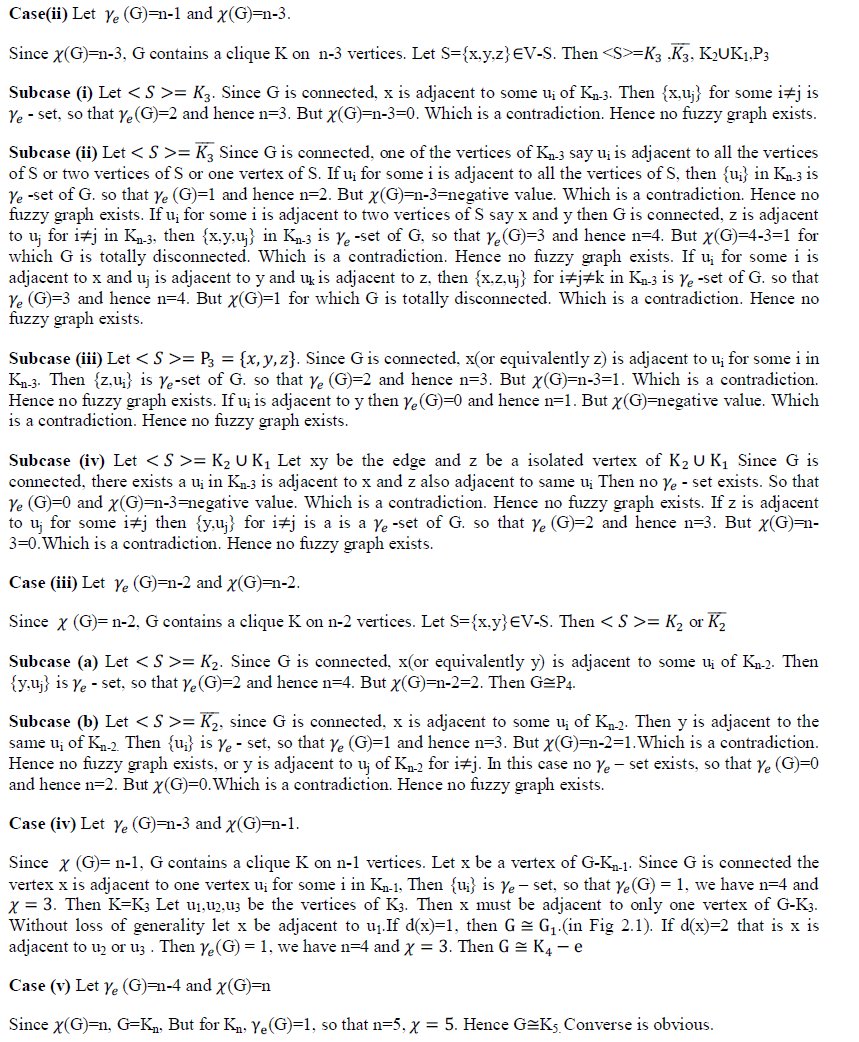 |
III.CONCLUSION |
| In this paper, upper bound of the sum of Efficient domination and chromatic number is proved. In
future this result can be extended to various domination parameters. The structure of the graphs had been given
in this paper can be used in models and networks. The authors have obtained similar results with large cases of
graphs for which |
References |
|